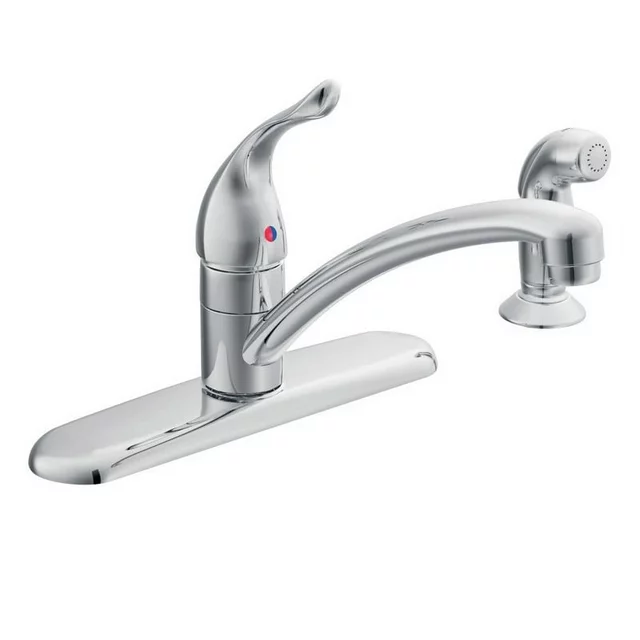Did you know that plumbing has been around since ancient civilizations and that it has influenced everything from daily hygiene to popular video games? Get ready to dive into the fascinating world of plumbing and uncover some truly surprising fun facts about plumbing!
Key Takeaways
- Indoor plumbing has a long history, with significant contributions from Sir John Harrington and Thomas Crapper.
- Fire sprinkler systems are a life-saving innovation while low flush toilets have environmental benefits.
- Plumbers play an important role in providing clean drinking water & Mario & Luigi show how plumbing can be entertaining!
The Origins of Indoor Plumbing

Indoor plumbing has a rich history that dates back to ancient Egypt around 2500 BC, where they used copper piping to replace earthen plumbing pipes. Imagine life without indoor plumbing – difficult, isn’t it? The historic charm of Boston, the first U.S. city to adopt this convenience, echoes this sentiment.
Since 1963, over 5.3 million miles of copper piping have been installed in U.S. homes, including perforated pipes for drainage. The vast network of pipes provides us with the convenience of indoor plumbing, from hot showers to flushing toilets. So, the next time you use the restroom, remember that you’re partaking in a tradition that spans thousands of years!
The Significance of Sir John Harrington and Thomas Crapper

Sir John Harrington, the inventor of the first flushing toilet in 1596, and Thomas Crapper, the man who popularized it in the 19th century, were both instrumental in the development of modern sanitation. The nickname “the John” for flushing toilets in the U.S. can even be traced back to Sir John Harrington’s name. Without their contributions, we might still be using chamber pots and outhouses!
While the flushing toilet has come a long way since Harrington’s time, it remains an essential fixture in our daily lives, just like the first fire sprinkler system. The remarkable impact these two plumbing pioneers have had on our homes and public spaces is truly intriguing.
Fun Facts About Plumbing: The Evolution of Toilet Paper
Before the invention of modern toilet paper, people used a variety of materials for hygiene purposes, such as moss, sponges on sticks, and even bamboo spatulas. However, the history of toilet paper as we know it today dates back to ancient China in the 6th century, when paper was first used for cleansing.
Fast forward to 1857, when Joseph C. Gayetty created the first packaged toilet paper, marking the beginning of a new era of hygiene and comfort. Since then, toilet paper has undergone numerous innovations, transforming from the first packaged toilet paper into the soft, multi-ply rolls we use today. Life without this crucial household item would be quite challenging to envision!
Hot and Cold Water: A Modern Luxury

Hot and cold running water in homes was once a luxury reserved for the elite. The White House was an early adopter, installing running water on the main floor in 1833. In fact, even ancient Greeks had hot and cold running water in their homes! However, it wasn’t until the 19th century that this modern luxury became a standard feature in most homes.
Today, we often take the convenience of hot and cold running water for granted. We can easily adjust the water temperature to our liking, whether we’re taking a hot shower or washing our hands with cold water. The fact that this simple comfort, provided by a hot water heater, was once a rare luxury is truly remarkable.
The Invention of the Single-Handle Faucet by Al Moen

Al Moen’s invention of the single-handle faucet in 1939 revolutionized the plumbing industry and made it easier to control water flow and temperature in various applications, including fixing a leaking faucet. Moen was inspired to create this innovative faucet after burning his hands on a burst of hot water from a two-handle faucet.
The single-handle faucet, a symbol of Moen’s ingeniousness, has become a cornerstone of modern plumbing. Its simplicity, ease of use, and convenience make it a popular choice for homeowners and plumbers alike. Al Moen’s invention has undoubtedly left a lasting impact on the world of plumbing.
Plumbing on the International Space Station
Plumbing on the International Space Station (ISS) presents unique challenges due to the lack of gravity, requiring specialized systems and technology, such as a floating mechanism. Instead of relying on gravity or pressure, pumps are used to move water through the pipes, while waste is recycled through a special water treatment plant.
Astronauts aboard the ISS even use squirt-gun-like hoses to dispense and distribute water for various purposes, such as brushing their teeth. The innovative plumbing solutions on the ISS showcase the adaptability and ingenuity of plumbing systems in even the most extreme environments.
The Most Expensive Toilet in the World

For those who appreciate the finer things in life, the world’s most expensive toilet is a luxury plain gold toilet made of solid gold and valued at over $5 million. Located in Hong Kong, this extravagant toilet is a true testament to the opulence some people are willing to indulge in, even in the most private of spaces.
Fire Sprinkler Systems: A Life-Saving Innovation
Fire sprinkler systems are a crucial plumbing innovation that saves countless lives by extinguishing fires quickly. The history of fire sprinkler systems dates back to 1723 when Ambrose Godfrey invented the first automated sprinkler system. Since then, fire sprinkler systems have evolved and become more sophisticated, effectively protecting homes, businesses, and public spaces from devastating fires.
These life-saving systems detect and extinguish fires by releasing water when the air above a fire becomes hot enough to trigger the sprinkler system. Fire sprinkler systems are a prime example of how plumbing innovations, including the plumbing system, can have a profound impact on our safety and well-being.
The Importance of Proper Sewer Systems
Proper sewer systems are essential for maintaining public health and preventing water pollution. Sewer systems help prevent waterborne diseases by removing pollutants from wastewater and treating sewage before it is released into the environment.
Sewage treatment plants play a vital role in reducing the risk of diseases such as cholera, dysentery, and typhoid. Cities like Cleveland and Philadelphia have exemplary sewer systems that effectively handle both stormwater and sewage, reducing pollution and improving public health.
The role of proper sewer systems in safeguarding the health and safety of our communities is indispensable.
Why Manhole Covers Are Round

Manhole covers are round for a practical reason: to prevent them from falling through the hole and causing accidents. A round cover cannot fall through its circular opening, unlike square or rectangular covers, which could potentially dislodge and create hazards.
Manhole covers are typically made from gray cast iron, ductile cast iron, or other materials like composite and fiberglass. Weighing between 90 to 150 pounds or more, these hefty covers serve as a reminder of the practical and safety-conscious design choices made in the world of plumbing.
The Different Types of Toilet Plungers
Toilet plungers come in different shapes and sizes, designed for specific plumbing issues. There are two types of plungers; toilet plungers and shower/sink plungers. Both have different functions and should be used appropriately. Toilet plungers have a narrow bottom that fits snugly in the toilet bowl, while shower/sink plungers have a flat bottom.
Selecting the appropriate plunger for the problem ensures optimal results. Today, you can even find plungers with unique designs and innovative features, such as plungers with hidden cups or powerful suction. No matter the design, a trusty plunger is an indispensable tool for tackling common plumbing problems.
Fun Facts About Plumbing: Albert Einstein’s Connection to Plumbing
Albert Einstein, interestingly enough, held a profound respect for plumbers, going so far as to say that in another life, he would have chosen to be one.. Einstein appreciated the independence and freedom that plumbers enjoyed in their profession. In recognition of his admiration, Einstein was named an honorary member of the Plumbers and Steamfitters Union.
This surprising connection between one of history’s greatest minds and the world of plumbing truly highlights the importance and value of this often-overlooked trade.
The Environmental Benefits of Low Flush Toilets
Low flush toilets, also known as low flush toilet systems, are a water-saving innovation that can conserve up to 18,000 gallons of water per year. These high-efficiency toilets use no more than 1.6 gallons of water per flush, relying on gravity or pressure-assistance to clear waste from the toilet’s water tank.
Replacing traditional toilets, which typically use 5 to 7 gallons per flush, with low flush toilets can have a significant impact on water conservation and the environment. Embracing these eco-friendly plumbing solutions not only helps reduce our water usage but also contributes to a more sustainable future for our planet.
Fun Facts About Plumbing: The Role of Plumbers in Providing Clean Drinking Water

Plumbers hold significant responsibility in guaranteeing clean drinking water, a fundamental requirement for public health. They perform tasks such as regularly cleaning drains, avoiding harsh chemical cleaners, and installing filters to remove impurities and contaminants from our water supply.
By adhering to regulations regarding backflow prevention, pipework best practices, and thermostatic mixing valves, plumbers help protect us from waterborne diseases and ensure that our access to clean drinking water remains safe and reliable. Their expertise and dedication to their craft are crucial in preserving our health and well-being.
The Connection Between Plumbing and Video Games: Mario and Luigi
Mario and Luigi, the famous video game characters created by Japanese designer Shigeru Miyamoto, are actually plumbers by profession. Their plumbing background was chosen to fit the green pipes and underground settings featured in their iconic games.
These cherished characters, entertaining generations of gamers, demonstrate that even the realm of plumbing can spark enduring entertainment.
Fun Facts About Plumbing Summary
From the ancient origins of indoor plumbing to the modern innovations that conserve water and protect our environment, the world of plumbing is full of fascinating facts and surprising connections. As we’ve explored the history and impact of plumbing, it’s clear that this essential trade has shaped our lives in countless ways. So, the next time you turn on the faucet or flush the toilet, take a moment to appreciate the ingenuity and hard work of the plumbers who make it all possible.
Frequently Asked Questions
What is an interesting fact about Plumbers?
Surprisingly, the term ‘plumber’ comes from Latin and a plumbarius was someone who worked with lead. In 1988, the Lead Contamination Control Act was passed due to health concerns related to lead.
How did plumbing get its name?
The term ‘plumbing’ comes from the Latin word ‘plumbum’, which means lead. Lead was used in Roman era pipes and anyone who worked with it was called a “plumber”. Plumbing has been around since the days of the Roman Empire!
What is the oldest form of plumbing?
The ancient Egyptians used a very intricate piping system around 4000 – 2500 B.C., making it one of the oldest known forms of plumbing. This system was essential to their lives, providing access to water from the Nile.
Who first invented plumbing?
The ancient Egyptians are credited with inventing the first plumbing system around 4000 – 2500 B.C. They created an intricate piping system to make sure water flowed where it needed to go, essential for their lives depending on the Nile River.
How did ancient Egyptians handle indoor plumbing?
Ancient Egyptians handled their indoor plumbing with copper piping, making a modern improvement on earlier earthen pipes.
Questions? Contact Us!
